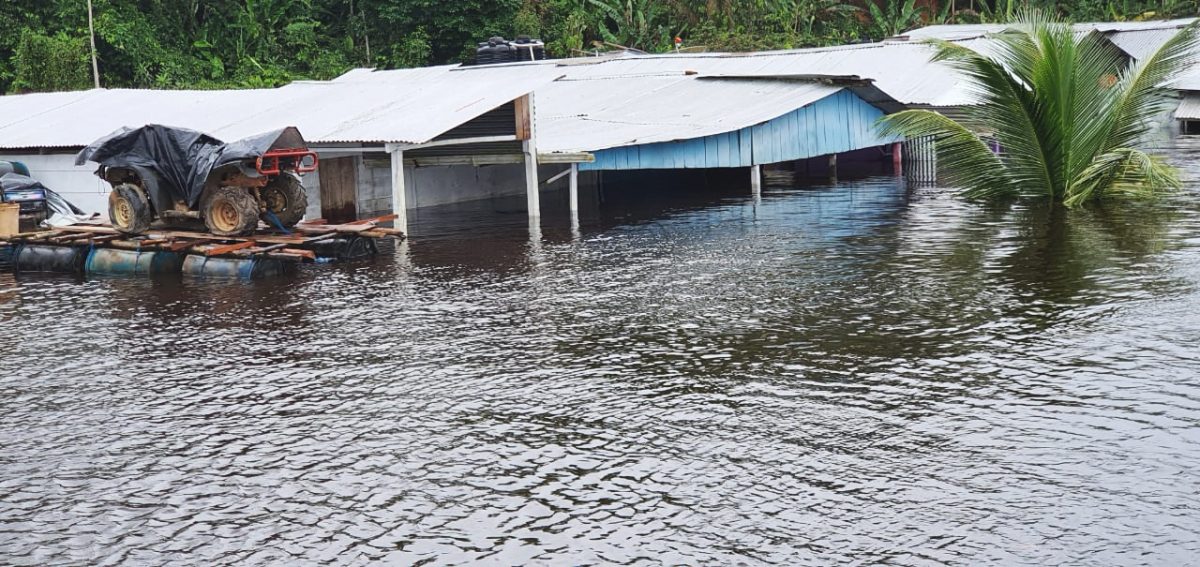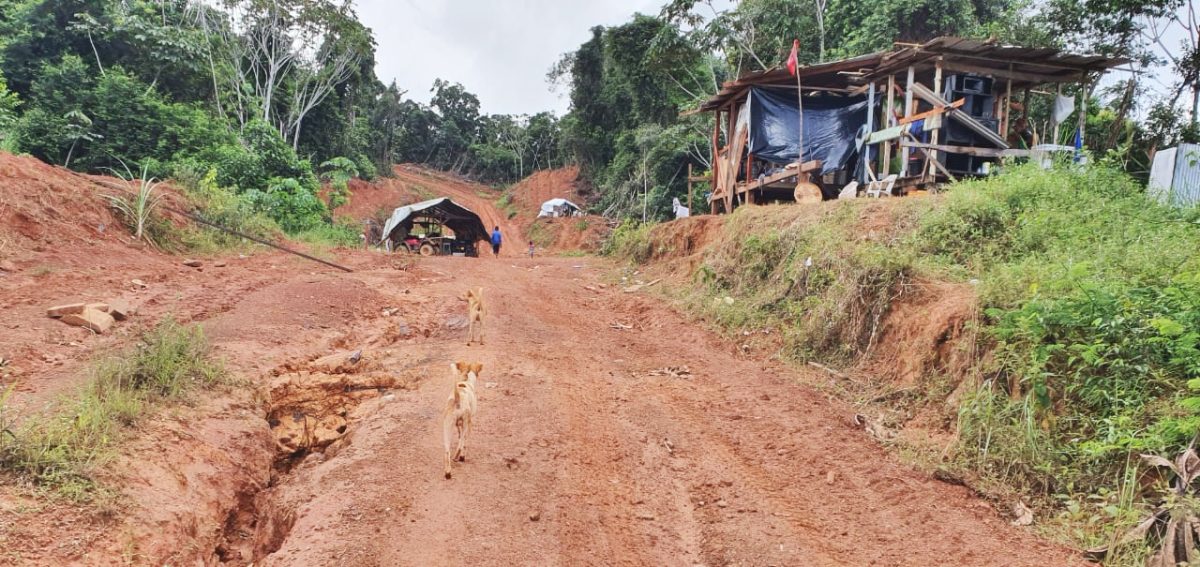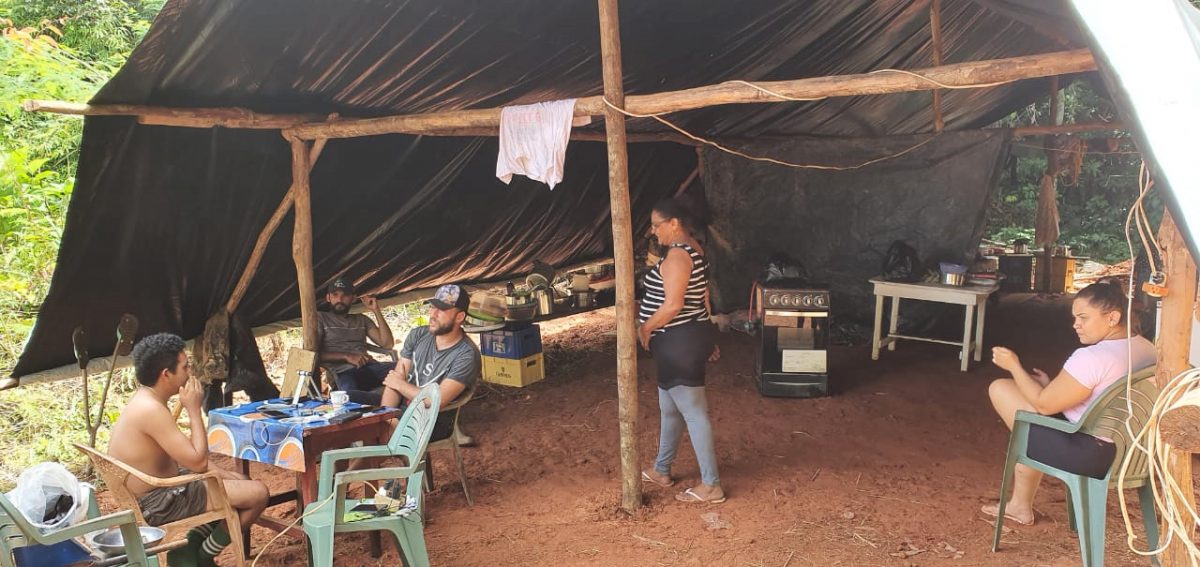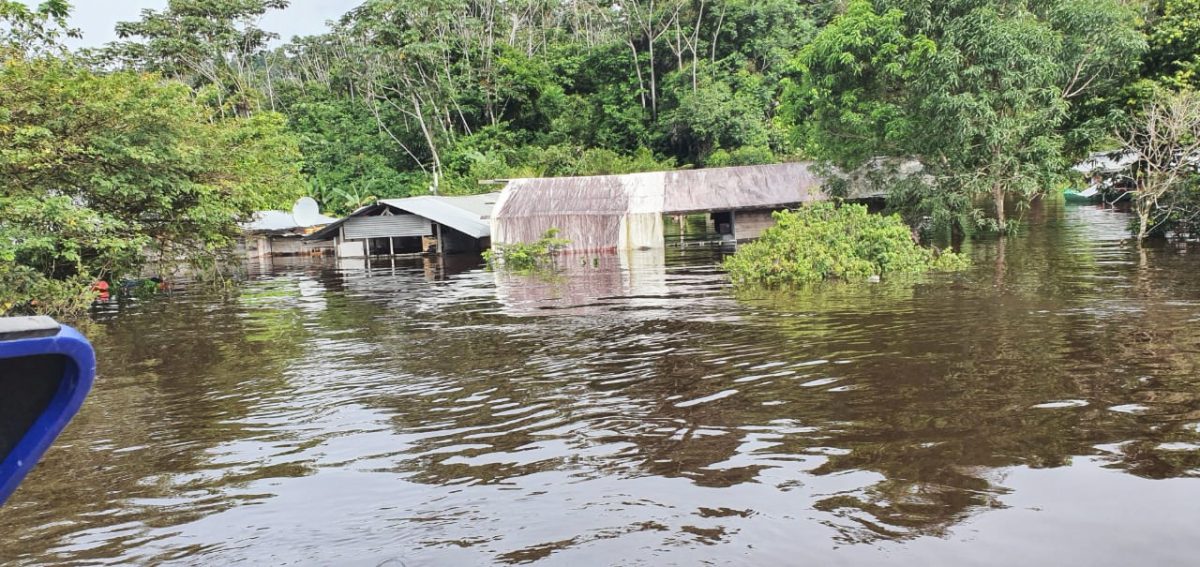Floodwater in the Middle Mazaruni, Region 7 has left “an unimaginable trail of destruction”, Regional Chairman Kenneth Williams said yesterday after spending four days in the district assessing the damage.
Speaking with Stabroek News yesterday via phone he said that many residents and miners are in need of assistance as the situation is worse than expected.
With water still high on the land, he explained that fuel and transportation costs have skyrocketed by 50% while prices for necessities like flour, sugar and rice have increased significantly.
“We encountered and saw firsthand the devastating impact and financial ruin on the hundreds of farmers and businessmen and women. At this time, most businessmen and residents are seeking and hoping for some sort of financial relief from the Government…” he related yesterday.
Williams was accompanied by the Regional Vice-Chairman Kamal Persaud and others from the Regional Democratic Council. Communities visited during the assessment included Isseneru, Kangaruma, Issano and Tassarene.
Mining Landings such as Tamakay, Surinamo, Apaika, Hyamerica and Pappy Show are all devastated by the flooding and this has forced a complete shutdown of economic activities.
From the visit, he concluded that many have been forced to construct makeshift tents and live in boats as their homes and camps remain inundated.
Water levels in some areas are as high as 15 feet and the greatest need for the people affected are food, water, financial relief and tents.
Oswaldo Greaves, a miner from Pappy Show explained that they were caught off guard by the flooding as the water level rose significantly overnight.
“We didn’t expect this water to come so high. By time they told us to move to higher ground the water was already here we had no choice and couldn’t save anything,” he stated.
A businesswoman from Seaman Landing told the visiting team that her losses are estimated at $4M. The majority of the items floated away as the water levels climbed, the woman said.
“Everything started to float way. The drums, fuel, cooking oil, flour and rice got soaked, everything got destroyed by the flooding. The water is still high we cannot go into the shop we have to live out here in a boat,” she pointed out.
Miners during their discussion called on government to request on their behalf a waiver of mortgage payments given the dilemma they face.
“All we are asking is for Mr Bank to give us some time. You see the situation that we are in, we cannot work, we cannot do anything but wait for this water to drop. We are asking the government to ask the banks to help us. It is not that we don’t want to pay but we are asking them to give us a break for a few months,” Greaves pleaded.
In the indigenous community of Kangaruma, 54 farms remain waterlogged and residents have incurred losses close to $20M.
Councillor, Sydney Stemple of Isseneru said this is the first time residents are experiencing flooding of this nature.
“This flooding has affected us in ways we cannot explain… [Persons] are unable to use their houses because half of the houses is covered in water. We have people living in temporary tent when the rain falls it causes discomfort because the water falls into their dwelling area… we cannot express the sorrowful situation we are in,” he lamented.
He stated that many cassava farmers are worried at what will happen in months to come.
“We are feeling the economic impacts in these villages already because fuel raising and foodstuff raising by 60%. We need a lot of help here because what we depend on for survival we don’t have that anymore,” he said, before pleading for assistance from government and civil society.
An extensive assessment by the Civil Defence Commission, last week stated that in Waramadong, over 200 farms have been impacted, five houses are flooded and residents have been relocated to higher ground. Residents said that there is a shortage of cleaning supplies, medicine and chlorine tablets. In Jawalla, over 150 farms and over 60 households have been affected, with seven families being relocated to safer living quarters. One house was reported to have collapsed due to the floodwaters. Quebanang, another village in the region, has a total of 86 affected households, the CDC said. Additionally, five government buildings are inundated. In Kako, 120 farms and 12 houses have been flooded. Residents who are concerned about water-borne diseases have requested mosquito nets, rain boots and water tanks.
An assessment of Chinoweng and Wax Creek found that 132 farms and 98 farms respectively were destroyed by floodwaters, the CDC said.
However, no family was required to be relocated. In Abbou, a small mining community in the Region, three houses were flooded but no residents had to be relocated. In other mining areas such as Imbaimadai, Ominik and Kambora, at least 20 mining camps have been flooded, forcing miners to move to higher ground, the CDC said. Several pieces of equipment were damaged and fuel and rations destroyed in floodwaters. Additionally, 11 homes were flooded while farming communities suffered major losses. In Kamarang, 15 households were flooded with 71 farms destroyed. Institutions including schools, churches and multi-purpose halls have been identified as possible shelters should the need arise, the CDC said.
Region Ten
Meanwhile, in Region 10, Chairman Deron Adams said the situation remains the same as floodwaters continue to rise.
“It had dropped in the Kwakwani area but water has begun to rise again and it is the same in Rockstone. The greatest need for the people that I know of is for chlorine tables to purify the water for use,” he said.
Unrelenting rainfall over the past few days has resulted in floodwaters in Kwakwani rising even higher.
Region Five
The Mahaica, Mahaicony and Abary Rivers remain relatively high, Regional Chairman Vickchand Ramphal said yesterday. He explained that the regional council through the support of government and the CDC has been regularly distributing water and hampers to families affected by the flooding.
He stated too that the water level in Wash Clothes, Mahaicony remains high and they have deployed machinery to lift embankments to prevent the water from overtopping into other areas. He stated too that irrigation pumps have been strategically placed within flooded areas to bring relief to residents.
The flooding in the region has not only decimated rice and cash crop production but also taken a toll on cattle rearing and livestock in the riverine villages. Farmers have reported losses in the millions and have called on government to provide substantial support after the flooding to assist in rebuilding their livelihoods.
As of Saturday, regions 2, 5, 6, 7 and 10 are the worst impacted regions and based on the assessment they are classified as Level 3 disasters, based on the magnitude of the flood.
Last Wednesday, President Irfaan Ali announced that Guyana’s flooding has been classified a Level 2 Disaster. Given the situation, Ali has formally declared the flooding a national disaster and an official proclamation was recorded in the Official Gazette on Thursday under Article 99 of the Constitution, which vests the executive authority of Guyana in the President, who has responsibility for disaster management.
“To date, a total of 17,829 cleaning hampers and 21,735 food hampers have been distributed across the regions as a form of emergency relief. The Commission continues to manage shelters set up in regions 2, 9 and 10, housing a total of 205 residents who have been displaced from their homes,” the CDC statement added.
The statement by the CDC noted that a Tropical Wave embedded within the Inter-Tropical Convergence Zone is currently affecting Guyana, resulting in heavy rainfall which could last until mid-July. The statement said that CDC has received reports of more than 29,000 households suffering from flooding in more than 300 communities countrywide.
Prime Minister Mark Phillips last Thursday reported to the National Assembly that the rainfall recorded over the past month was the second highest in four decades.








